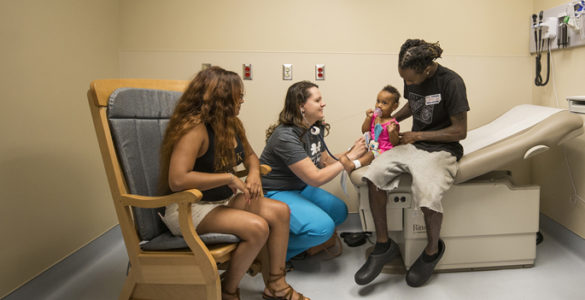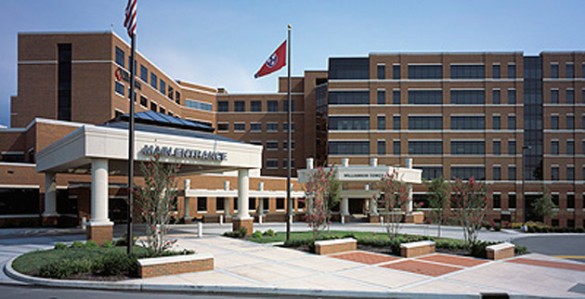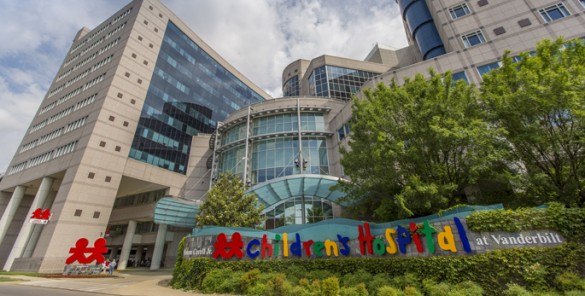On a recent Monday afternoon, the Pediatric Emergency Department at the Monroe Carell Jr. Children’s Hospital at Vanderbilt moved — within minutes — from the typical hustle and bustle of seeing and admitting patients to an entire children’s hospital on a state of full community alert. 
It began as a typical day. A couple of students from a nearby school presented to the Emergency Department after being sent home with what school officials believed to be the flu. Not terribly unusual. But when our astute clinicians learned the entire school, more than 270 students and their teachers, were all sent home due to flu concerns, their index of suspicion was raised. With the support of our Clinical Toxicology program, these students were soon diagnosed with carbon monoxide poisoning.
Realizing an alert had gone out to all families who were at risk for carbon monoxide poisoning and the potential that a high volume of patients may need care at our facilities, as well as those elsewhere in the city, our Vanderbilt Emergency Response Plan was activated at Children’s Hospital, triggering a cascade of actions necessary to accommodate an immediate surge in patient volume.
Vanderbilt physicians appeared on local TV news and news websites within two hours of the first diagnosis. Our medical staff urged all families at risk to immediately seek evaluation for specific symptoms. Undoubtedly, their clear, effective communication resulted in rapid care for families in urgent need of treatment, while avoiding unnecessary hospital trips for families not at risk.
As more patients suffering from carbon monoxide poising began to arrive at Vanderbilt, Children’s Hospital faced a new challenge — in a hospital with nearly all beds, including the emergency room, already full, how could we rapidly accept and treat a large influx of potential new patients?
The answer: great hospital leadership, a tremendous facility and a can-do attitude by faculty and staff. The hospital “commandeered” the Children’s Theater to create safe, comfortable temporary accommodations for patients and their parents. By the time this effort was winding down 48 hours later, 77 patients had been evaluated, with 43 children and four adults having been admitted for successful treatment.
It was an amazing sight. Our staff, highly experienced with managing the anxieties and special needs of young patients, supported families that were literally tethered to oxygen masks for 24 continuous hours, entertaining them with games, movies and other diversions.
The entire episode made me proud to be at Vanderbilt — from the first diagnosis that set these events in motion, to the expert communications supported by our public affairs team, to the flexible and creative management by our emergency room and inpatient teams in support of these young patients and their families.
Beyond the life-saving care for these young people, this case illustrates for all of us Vanderbilt’s capacity to respond to the unexpected when local, regional and even national disasters occur.
The ability to not only respond, but to lead during a crisis is a vital role Vanderbilt plays in Nashville and throughout the region.
One need only look at the evening news to imagine the role we could be called upon to play should the worst happen here in Middle Tennessee. A large structure fire with many victims, a commercial aviation crash and tornadoes are but a few examples of mass casualty events we stand ready to respond to at a moment’s notice. And since Sept. 11, 2001, we have expanded our preparedness efforts to include response plans for the possibility of chemical, biologic, radiologic and explosive terrorist acts.
While we would certainly be assisted by many hospitals that would respond during a crisis in the region, in the event of a mass casualty event, VUMC is designated by the state as the leading health care provider for the Middle Tennessee Region, the largest region of Tennessee’s state-wide disaster response plan. In this role, we serve as the Middle Tennessee Regional Medical Communications Center, the Middle Tennessee Referral Center, the Level 1 Trauma Center, the Regional Burn Center and the Comprehensive Regional Pediatric Center.
It’s an enormous responsibility we take very, very seriously.
The Medical Center and the University as a whole devote significant resources to sustain our readiness. We keep strategic stockpiles of critical medications and a diverse portfolio of other mission-ready resources on hand. And at any given time there are diverse groups of faculty, staff and administrators engaged in strategic planning, drills and the procurement and oversight of the capital resources necessary to respond to a crisis.
For example, the University recently invested in a new, robust communications platform called Everbridge that allows us to communicate more effectively with all students, faculty and staff during times of crisis. Everbridge has already been used to contact large numbers of our faculty and staff during tornado warnings, through cell phones or other contact numbers users can update on-line.
These investments by Vanderbilt in communication, safety and emergency systems for the public are expensive. They can be quantified and amount to millions of dollars each year in community benefit. What we will never be able to quantify is the vast experience and poise of our incredible faculty and staff that somehow “make it happen” — reacting instantaneously with wisdom and imagination on a “routine” Monday afternoon when a large group of children and families in our community suddenly needed the “A” team.
— Jeff Balser, M.D., Ph.D.,
Vice Chancellor for Health Affairs and Dean of the School of Medicine















